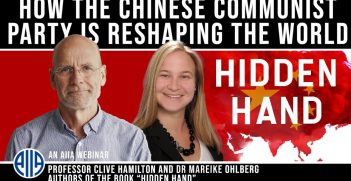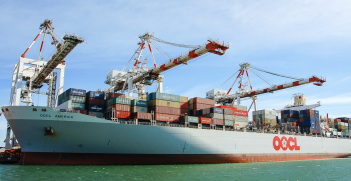Australian Foreign Policy in Political Time: Middle Power Creativity, Misplaced Friendships, and Crises of Leadership

In addressing the uncertainty Australia faces through its recurring shifts from stability to instability, it would be valuable to look at social psychological approaches, where ideas reduce uncertainty and stir stability.
Over the past century, Australian foreign policy orders, defined with respect to ideas that reduce uncertainty and stabilise interests, have been marked by recurring patterns of development and decline. Providing foundations for initial stability, Australian foreign policy is often marked by “middle power” efforts to construct ideas and institutions that lead states —and particularly “great and powerful friends”—to identify shared interests in cooperation. However, such initial stability often fuels later instability, as misplaced certainty in such great and powerful friends obscures new security and economic challenges.
What explains such recurring shifts from stability to instability? How do Australian tendencies to middle power diplomacy, great power friendship, and crisis vary across “political time,” defined with respect to the resilience of policy orders? What are the implications for leaders’ success or failure in advancing transformative change? In this light, even as realist and constructivist perspectives have differed over the import of material or social structures, each has cast agents as capable of smoothly adjusting to shifts in material or social contexts. This has led scholars to overrate the scope for stability and to obscure causes of crises—often dismissed as “exogenous” shocks. In Australian foreign policy scholarship, this has led to an overemphasis on officials’ abilities to adapt to shifts in power, institutional challenges, or shared ideas and to a neglect of the potential for miscalculation, instability, and crises. To redress such oversights, I draw on social psychological approaches that ease rationalist assumptions, presuming instead that ideas that initially reduce uncertainty and enable stability can subsequently evolve in ways that cause misplaced certainty and crisis. Having done so, I offer a model tracing three stages in the development of Australian foreign policy orders. These span the principled construction of orders via middle power efforts to embed hegemonic and market power in institutional constraints, their intellectual conversion in ways that fuel misplaced certainty in hegemonic bandwagoning and macroeconomic accommodation, and the construction of crises that impede or enable change.
First, in the principled construction of orders, rhetorical leaders interpret events in fast thinking fashion, “originating impressions and feelings that are the main sources of … explicit beliefs.” Such constructions are most successful when a Kissinger-styled “constructive ambiguity” expands the scope for policy legitimacy and effectiveness. Given a principled ambiguity, leaders can surmount coalitional and intellectual differences by focusing on broader value-laden agreements. This can in turn enhance effectiveness where it enables the use of a wider array of policy tools, spanning coercion, incentives, and exhortative appeals. In Australia, such constructive ambiguity has been facilitated by a pragmatic liberal tradition, rooted in the abovementioned nineteenth-century stress on accumulations of hegemonic or market power. This stance can be seen as recognising the potential for sustained great-power dominance and monopolistic abuses of market power. In policy terms, it justifies not supplication to great powers, but rather middle power efforts at “entrepreneurial and intellectual leadership,” to frame issues in ways that can reshape other states’ interests and shared norms. Taken as a whole, middle power initiatives are marked by a pragmatic toleration of ambiguity, to enable a wider array of state and market agents to identify shared security and economic interests.
Even as policy orders may appear self-reinforcing, they may not be fully “locked in.” Instead, where intellectual and institutional elites fear principled (if not populist) excesses, they may engage in the intellectual conversion of shared principles, abstracting away from ambiguous beliefs to derive more formal rules. Such conversion is always necessary to some degree in refining rules and decision-making procedures. Yet, where intellectual conversion is overdone, it can engender inefficiencies. This can reflect precognitive tendencies to what Ellsberg termed “ambiguity aversion,” as agents repress principled concerns and reduce qualitative, radical uncertainties to quantitative, subjective risks. Consider the consequences for “middle power” creativity. On the one hand, the ambiguity of the middle power concept can be a strength where leaders attract more supporters and employ a wider range of policy instruments. On the other hand, where ambiguity is seen as impeding policy clarity and precision, misplaced certainty particularly regarding great-power band-wagoning and macroeconomic accommodation may ensue from efforts to promote clarity. In security settings, states may ignore signs of great-power overstretch, as when Australian policy overrated British commitments to Singapore and American capabilities in Vietnam. In economic settings, ambiguity aversion may likewise blind officials to new sources of market power, as when Australian policy overlooked interwar financial instability and Vietnam-era stagflation. In such settings, misplaced certainty can blind agents to the need for adjustments, obscuring mounting instability and crisis.
Even where intellectual repression fuels instability and crisis, agents committed to prevailing ideas and interests may resist change. Indeed, “crises” are initially often not self-evident. While historical narratives often treat events like the Great Depression or the Tet Offensive as punctuated shocks that “lock in” change, their meanings often emerge only slowly over time. Even where leaders herald popular calls for reform, they may exhibit caution owing to concerns that reform may have adverse consequences for strategic adjustment or economic recovery. No less a figure than Keynes noted that, “even wise and necessary Reform may … impede and complicate Recovery. For it will upset the confidence of the business world … before you have had time to put other motives in their place.” Given such tensions, agents responding to initial instability often engage in the slow-thinking styled repression of crises, defined as the interpretation of events as justifying the strengthening of intellectual commitments. Nevertheless, this repression of crises seldom eliminates pressures for change, as leaders also engage in the construction of crises, defined as the interpretation of events as justifying principled departures. Tensions between the repression and construction of crises and views of leaders as inconsistent can in turn give rise to “credibility gaps,” spurring electoral backlash, factional challenges and ongoing instability. In such settings, change often acquires less a punctuated than an iterative character, marked by alternating retreat and advance. Consider that even after the Scullin government had been brought down by the Great Crash and Curtin had suggested that Australia would look to America, the postwar order would not fully emerge until the early 1950s. Likewise, even as Whitlam urged that Australia move in a middle power direction in the contexts of Vietnam and stagflation, ‘reform’ did not find full expression until the mid-1980s. In this light, early leaders who play a necessary role in commencing processes of change may be fated to do so “too soon,” leaving later, post-crisis leaders to articulate larger visions.
Finally, in terms of Australian foreign policy debates, this analysis stresses the scope for middle power creativity in reshaping the preferences of “great and powerful” friends, regional allies, and market agents alike. Consider that, in contemporary settings, neither the US nor China “knows” where their interests lay across issue areas spanning concerns for sovereignty, exchange rate, or environmental regimes. Moreover, each great power can be seen as vulnerable where such ambiguities are exploited by nationalist and populist elements. In this light, should Australian foreign policy move again to exercise middle power creativity, scope may be found in not only countering such global populist excesses, but also enabling a new round of middle power activism across interrelated concerns for human security, equality, and environmental activism. Situated in a larger historical context, the current moment should accordingly be seen as one of iterative transition, in which the limits of an earlier order have become clear, but the nature of any successor remains subject to ongoing debate.
Dr Wesley W. Widmaier is an Australian Research Council Future Fellow in the Centre for Governance and Public Policy and at the Griffith Asia Institute at Griffith University in Brisbane Australia. His research interests include International Political Economy, International Relations Theory and the specific role of wars and crises as mechanisms of large-scale change.
This article is published under a Creative Commons Licence and may be republished with attribution.





